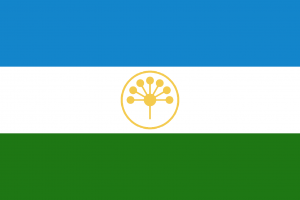Language/Bashkir/Culture/Holidays-and-Celebrations
Introduction
Welcome to the Bashkir Culture course! In this lesson, we will dive into Bashkir customs and traditions related to holidays and celebrations. With a rich and diverse history, Bashkortostan has various festivals and special occasions throughout the year. Through this lesson, you will learn the most important Bashkir holidays and their traditions. This will be useful if you plan to visit Bashkortostan or if you want to immerse yourself in Bashkir culture.
Bashkir Holidays and Celebrations
Bashkirs celebrate various holidays throughout the year, each with its unique traditions and rituals. Here are some of the most important festivals:
Sabantuy (Summer Festival)
Sabantuy is one of the most popular and frequently celebrated holidays in Bashkortostan. It is a summer festival celebrated in June or July, depending on the lunar calendar. Sabantuy loosely translates to "holiday of the plow," and it marks the end of the spring planting season.
Sabantuy is characterized by traditional games, dancing, and feasting. The most popular game is baiterek (tree of life), where participants climb a greased pole to reach the prizes at the top. Another game is tugan tel, where two players pull on opposite ends of a stick to see who can make the other lose their balance. These games have a long history in Bashkir culture and are often practiced throughout the year.
During Sabantuy, people dress in traditional clothing, which includes embroidered shirts and long, flowing skirts for women. The highlight of the festival is the feast, which features traditional Bashkir cuisine such as chak-chak (sweet fried dough) and shulpa (meat soup).
Kurban Bayrami (Feast of Sacrifice)
Kurban Bayrami is one of the most important religious holidays for Muslims worldwide. It marks the end of the annual pilgrimage to Mecca, known as the Hajj. The festive occasion involves sacrificing an animal, usually a sheep or a goat, as a symbol of obedience to Allah. The meat from the sacrifice is split into three parts: one for the family members, one for relatives and friends, and the third part for the poor and needy.
The Kurban Bayrami is celebrated around the world and is an important holiday amongst the Bashkir Muslim community. It is celebrated on the 10th day of the Islamic month of Dhul Hijjah. Apart from the sacrifice, one also visits relatives and exchange traditional sweets, and other festive delicacies.
Chak-Chak Day
Chak-Chak day is celebrated in October in certain parts of Bashkortostan such as Ufa, the capital city. The festival is a celebration of the traditional Bashkir dessert of the same name.
Chak-chak is made by frying dough, which is then coated with a hot syrup made of honey, sugar, and sometimes sour cream. The festival includes a cooking competition where participants compete to create the most unique and delicious varieties of chak-chak.
Maslenitsa (Butter Week)
Maslenitsa is a popular holiday, celebrated in many parts of Russia including Bashkortostan. It is a one-week festival that precedes the start of Lent. During Maslenitsa, people eat large amounts of pancakes, which are a symbol of the sun, and engage in traditional games and festivities.
One significant feature of Maslenitsa is the burning of a straw effigy known as "Maslenitsa." The burning of Maslenitsa symbolizes the end of the week-long celebrations and the beginning of spring.
New Year's Eve
New Year's Eve is one of the biggest and most anticipated holidays in Bashkortostan and across Russia. The city squares turn into a vibrant hue of lights, garlands, and ornamentation which makes being outdoors a spectacle to behold.
People visit each other's homes, attend fireworks displays, and enjoy festive foods such as Olivier salad, kholodets, Shurpa and other traditional cuisines. New Year's Eve night is also the time when Russian president sends his wishes and speeches, which are often broadcasted on television.
Conclusion
That brings us to the end of this lesson on Bashkir holidays and celebrations. We hope you have enjoyed learning about the traditions and customs that make these festivals so unique. Whether you visit Bashkortostan during the Sabantuy festival, celebrate Maslenitsa with your loved ones, or simply try out chak-chak during the Chak-Chak day festival, this knowledge will enable you to have a deeper appreciation for Bashkir culture. In the next lesson, we will dive into the traditional Bashkir cuisine. Stay tuned!
Other Lessons

